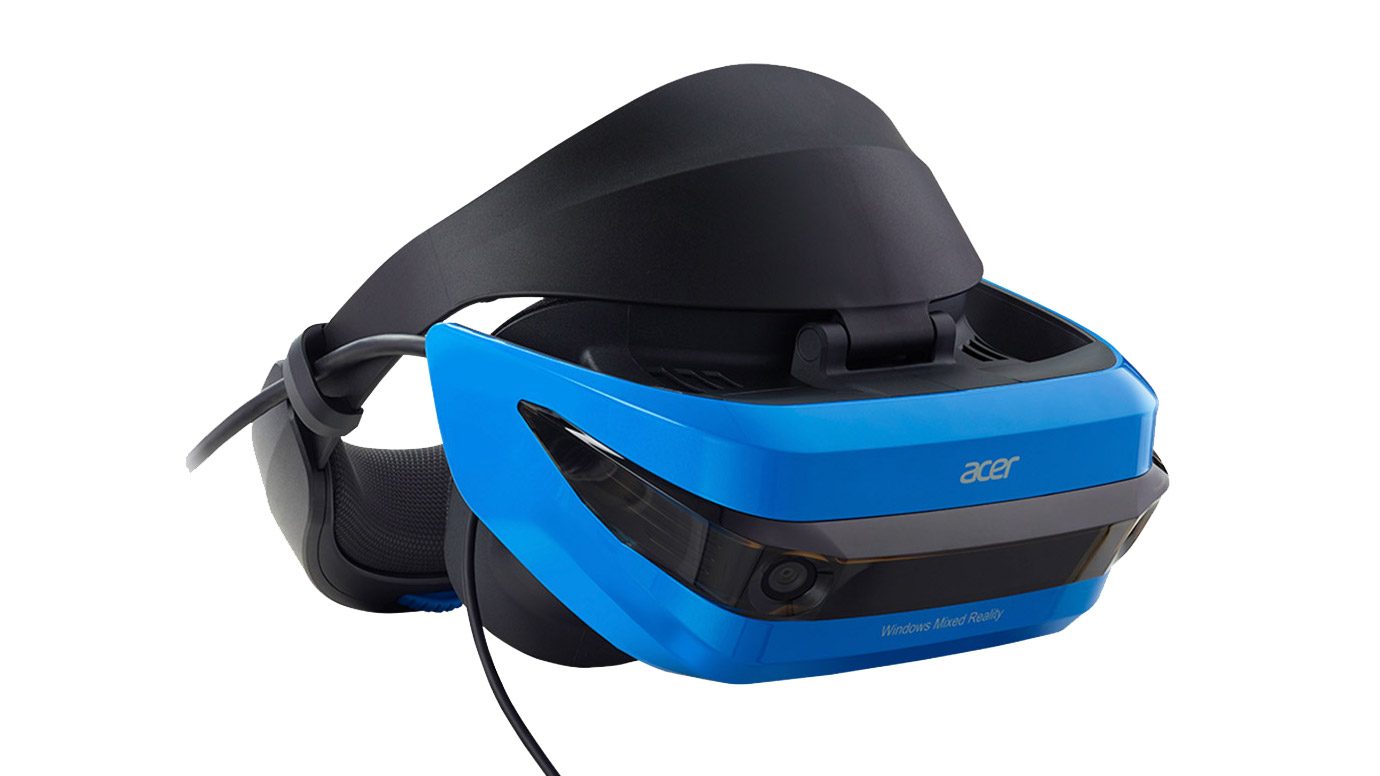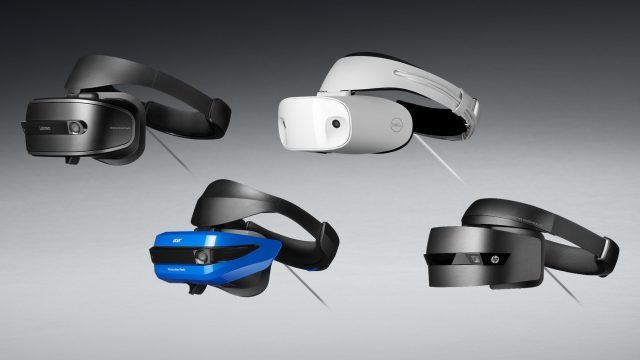Microsoft’s Windows 10 ‘Fall Creators Update’ is available for download today, making the operating system compatible with its line of Windows “Mixed Reality” VR headsets, which coincidentally are arriving on doorsteps and store shelves starting today too.
Windows 10 Fall Creators Update was first announced at the Microsoft Build dev conference back in May, and promised to bring with it some incremental updates alongside one of the most important of all: support for its line of Windows VR headsets. You can wait for the timed rollout, which is said to come to all compatible PCs over the next few weeks, or skip the line entirely and download the update today.
Setting them apart from other PC VR headsets like the Oculus Rift and HTC Vive, Windows VR headsets (confusingly named “Mixed Reality”) include inside-out tracking thanks to the on-board vision processing sensors, meaning there’s no need for external sensors or base stations—a truly ‘plug and play’ experience. As a product of the same reference design, the headsets pack identical specs, although the build quality and design aesthetic seem to differ along price lines.
Windows VR Headsets: Basic Specs
- Dual displays at 1440 x 1440 per eye
- 2.89” diagonal display size (x2)
- Front hinged display
- 105 degrees horizontal field of view
- Display refresh rate up to 90Hz (native)
- Built-in audio out and microphone support through 3.5mm jack
- Single cable with HDMI 2.0 (display) and USB 3.0 (data) for connectivity
- Inside-out tracking
- 4.00m cable
Headsets from Acer, Dell, HP, and Lenovo are available both online and in select stores starting today.
Acer Windows Mixed Reality Headset


At the lowest price tier for $400 (with controllers) is Acer’s retro-styled headset. Like all headsets in Microsoft’s lineup, it features a halo-style head strap and a flip-up design, although it uses less expensive materials in its construction, making it seem a little more plasticy than the others while offering the same basic functionality.
Dell Visor
Smooth and futuristic, Dell’s Visor falls in line with some premium styling that will set you back $450 (with controllers). A rubberized texture gives the headset good grip without collecting finger prints, and was supposedly weighted in strategic spots to be more comfortable for longer play sessions.
HP Windows Mixed Reality Headset
HP’s headset is more business than play in styling, with its facial interface featuring cutouts for eye glasses to go along with its sober grey scale tones. HP matches Dell in pricing at $450 (with controllers)
Lenovo Explorer
Another headset that looks like it means business is the Lenovo Explorer. With styling that looks at home with Lenovo’s line of ThinkPads, the headset sits at the lowest price tier of $400, of course offering all the same functionality.
Samsung HMD Odyssey
Samsung’s sleek Odyssey headset may be slated for a November 6th launch in the US (now available for pre-order), but it sets itself a part from the others with a higher comparative resolution with its 2880 x 1600 OLED, pushing a 90Hz refresh and up to 110 degree field of view. Integrated audio and integrated dual mic array clearly put this ahead of its cousins, but it also comes at the price tag of $500 (with motion controllers), $100 more than the Oculus Rift.
The headsets are being sold in a bundle including two wireless controllers that utilize the headsets’ room-tracking tech. Ergonomically, the controllers aren’t that great when compared to Oculus Touch, although they seem to provide positional tracking that is clearly above that of PSVR’s Move controllers. Check out our hands-on here.
If you’re worried about whether your computer can handle the headsets or not, Microsoft recently published a minimum spec list that says the only thing you need is a desktop or laptop with a fairly recent i5 processor and a GPU with integrated Intel HD Graphics 620 or greater DX12 capable integrated graphics card. You’ll also need a minimum of 8GB of RAM, a single HDMI 1.4 or DisplayPort 1.2, and a single USB 3.0 Type-A or Type-C port to get you started in the world of VR.
Granted, a PC reflecting Oculus or Vive’s recommended specs will get you into more graphically intensive applications like games on Steam, although you won’t be able to play Steam games just yet. Developers already have a preview version of Windows Mixed Reality SteamVR support, but consumers will gain access sometime before the end of the year.
We’re putting out our deep dive hands-on with the hardware later today, so check back for the most comprehensive breakdown you’ll likely find on the subject.

